Imagine waking up and knowing that your office is just a few steps away, yet feeling overwhelmed by the invisible lines between work and personal life. This is a common scenario for many who have embraced remote work.
The convenience of working from home comes with its own set of challenges, especially when it comes to maintaining a healthy work-life balance. As we navigate through this digital era, it’s crucial to find harmony between our professional responsibilities and personal well-being.
In this guide, we’ll explore strategies to help you achieve that elusive balance, ensuring that both your work and personal life flourish.
Understanding Work-Life Balance in a Remote Work Environment
In the world of remote work, the concept of work-life balance takes on new dimensions. It’s not just about dividing time but creating boundaries that nurture both spheres of life. Let’s delve into what this balance truly means and why it’s pivotal for those working from home.
Defining Work-Life Balance
Work-life balance is a dynamic state of equilibrium where an individual’s professional and personal commitments are harmoniously aligned. It is about allocating time and energy to both domains in a way that neither is neglected nor overwhelmed.
In the context of remote work, this balance often involves setting clear boundaries, managing time efficiently, and prioritizing tasks. The goal is to create a lifestyle that allows you to be productive without compromising on personal well-being.
Consider creating a visual schedule to manage your time effectively. Use color-coded blocks to differentiate between work tasks and personal activities. This not only helps in organizing your day but also provides a visual reminder to maintain balance. Incorporating such tools can significantly enhance your ability to juggle multiple responsibilities.

The Importance of Work-Life Balance
Achieving a balanced life is not merely a luxury but a necessity for mental and physical health. A well-maintained work-life balance can lead to reduced stress levels, increased productivity, and greater job satisfaction.
When personal life and work are in sync, individuals often experience improved relationships and a deeper sense of fulfillment. For remote workers, this balance is vital as it helps prevent burnout and fosters a healthier work environment.
Common Remote Work Challenges
Remote work brings with it a unique set of challenges that can disrupt the delicate balance between work and personal life. From blurred boundaries to feelings of isolation, these obstacles can hinder your ability to maintain harmony. Let’s explore some of the most common challenges faced by remote workers.
Blurring of Work and Personal Life
One of the most significant challenges of remote work is the blurring of lines between professional and personal spaces. Without the physical separation of an office, work can easily spill into personal time.
This often leads to longer work hours and difficulty in switching off from work mode. Creating distinct boundaries and adhering to them is essential to prevent work from encroaching on personal life.

Isolation and Loneliness
While working from home offers flexibility, it can also lead to feelings of isolation and loneliness. The absence of social interactions with colleagues can make remote workers feel disconnected.
This lack of human connection can affect morale and productivity. Finding ways to stay connected with colleagues and engaging in social activities outside of work can mitigate these feelings.
Distractions at Home
Home is filled with distractions that can disrupt focus and productivity. From household chores to family responsibilities, these interruptions can make it challenging to maintain a steady workflow.
It’s important to identify these distractions and develop strategies to minimize their impact. Establishing a dedicated workspace and setting boundaries with family members can help create a more focused work environment.

Tips for Creating Boundaries
Setting boundaries is a fundamental step towards achieving a successful work-life balance. By clearly defining where work ends and personal life begins, you can enjoy both aspects without feeling overwhelmed. Here are some effective strategies to create and maintain these boundaries.
Establishing a Dedicated Workspace
Having a dedicated workspace is crucial for maintaining focus and productivity. This space should be separate from areas associated with relaxation or leisure.
A well-organized workspace not only enhances efficiency but also signals to others that you are in work mode. Invest in ergonomic furniture and keep your desk clutter-free to create a conducive environment for work.
Enhance your workspace by incorporating elements that boost motivation. Personalize your desk with items that inspire you, such as photos, plants, or artwork.
This personalization can increase your attachment to the workspace and improve your overall mood. Remember, a pleasant environment can significantly impact your work performance.
Setting Clear Work Hours
Defining work hours is essential to prevent work from taking over your entire day. Set specific start and end times for your workday and communicate these hours to your colleagues and family.
This not only helps in maintaining a routine but also ensures that you have ample time for personal activities. Sticking to these hours can foster a sense of normalcy and structure in your daily life.

Communicating Boundaries with Others
Effective communication is key to maintaining boundaries while working from home. Clearly convey your work schedule and availability to family members and friends.
This helps them understand when you are occupied and minimizes interruptions. Similarly, communicate with your colleagues about your boundaries to ensure mutual respect and understanding.
Building a Productive Home Environment
Creating a productive home environment is essential for thriving in a remote work setup. By organizing your space and utilizing the right tools, you can enhance efficiency and maintain focus. Let’s explore ways to build an environment that supports productivity.
Organizing Your Workspace for Success
An organized workspace is a cornerstone of productivity. Arrange your desk to have easy access to essential tools and documents. Use storage solutions like shelves and drawers to keep your area tidy. An organized space not only boosts efficiency but also reduces stress and enhances creativity.
| Aspect | Organizational Tips |
|---|---|
| Desk | Keep only necessary items on the desk to reduce clutter. |
| Files | Use digital storage solutions to minimize physical paperwork. |
| Lighting | Ensure your workspace has adequate lighting to reduce eye strain. |

Incorporating Breaks and Downtime
Regular breaks are vital for maintaining productivity and preventing burnout. Schedule short breaks throughout your workday to recharge. Use this time to stretch, take a walk, or engage in a hobby. Incorporating downtime into your routine can refresh your mind and improve focus when you return to work tasks.
Utilizing Tools and Technology for Efficiency
Leveraging technology can greatly enhance your productivity while working from home. Use project management tools to track tasks and deadlines.
Communication platforms can facilitate collaboration and keep you connected with your team. By utilizing these tools, you can streamline your workflow and manage your time more effectively.
Explore different productivity apps to find the ones that suit your needs. Applications like Trello or Asana can help organize tasks, while Slack can enhance communication with colleagues.
Experiment with various tools to discover what works best for you. Adapting these technologies can simplify your work processes and boost efficiency.
Maintaining a Healthy Mindset
A healthy mindset is a cornerstone of achieving work-life balance. By prioritizing self-care and fostering connections, you can cultivate a positive outlook and enhance your overall well-being. Let’s explore strategies to maintain a healthy mindset while working from home.

Practicing Self-Care and Mindfulness
Self-care is essential for nurturing both mental and physical health. Incorporate activities like meditation, exercise, or journaling into your daily routine.
Practicing mindfulness can help reduce stress and improve focus. Prioritizing self-care ensures that you are in the best possible state to tackle both work and personal challenges.
Staying Connected with Colleagues
Maintaining connections with colleagues is vital for combating feelings of isolation. Schedule regular virtual meetings or informal catch-ups to stay engaged.
Collaborating and sharing experiences with coworkers can boost morale and foster a sense of camaraderie. Staying connected helps create a supportive network that enhances your remote work experience.
Setting Realistic Goals and Expectations
Setting realistic goals is crucial for avoiding overwhelm and maintaining motivation. Break down larger tasks into smaller, manageable steps. Celebrate small achievements to stay motivated and maintain a positive outlook. By setting achievable goals, you can maintain a steady pace and prevent burnout.

Empowering Yourself for Work-Life Balance
Empowerment is the key to mastering work-life balance. By reflecting on your journey, celebrating successes, and continuously adapting your strategies, you can create a balanced and fulfilling life. Let’s explore how to empower yourself in this pursuit.
Reflecting on Your Work-Life Balance Journey
Regular reflection is essential for assessing your progress and making necessary adjustments. Take time to evaluate what is working and what needs improvement.
Reflecting on your journey helps you gain insights and develop a deeper understanding of your needs. This self-awareness empowers you to make informed decisions about your work-life balance.

Celebrating Small Wins
Celebrating small victories is a powerful motivator in your journey toward balance. Acknowledge and appreciate the progress you make, no matter how minor it may seem.
Celebrating achievements boosts confidence and reinforces positive behaviors. This practice encourages a growth mindset and keeps you motivated to continue your efforts.
Continuously Adjusting Your Strategies
Flexibility is key to maintaining work-life balance in a constantly changing environment. Be open to adjusting your strategies as needed. Life circumstances and priorities evolve, and your approach should reflect these changes. Continuously adapting ensures that your work-life balance remains effective and aligned with your current situation.
In conclusion, mastering work-life balance while working from home is an ongoing journey that requires intentional effort and adaptation. By understanding the importance of balance, addressing remote work challenges, and implementing practical strategies, you can create a fulfilling and harmonious life.
Remember, the key is to remain flexible, stay connected, and prioritize both your professional and personal well-being.





